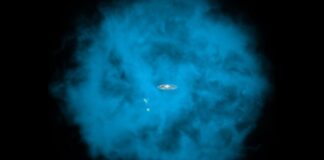
Quantum computing has long promised to outpace classical machines, but the road to practical systems has been slowed by one key challenge: the fragility of quantum states. Now, a surprising breakthrough in mathematical physics introduces a new player — the “neglecton” — which could dramatically simplify the path toward fault-tolerant quantum computers.
From Mathematical Trash to Treasure
The idea comes from work recently published in Nature Communications by mathematicians led by Aaron Lauda at the University of Southern California. Their research re-examined mathematical frameworks known as topological quantum field theories (TQFTs). Traditionally, physicists discarded certain “non-semisimple” structures within these theories because they appeared unusable.
But the USC team found that these neglected elements — now dubbed neglectons — could actually enhance the computational power of systems built on Ising anyons, a type of exotic quasiparticle considered promising for quantum information processing.
Unlocking Universal Computation
Ising anyons alone can only perform a limited set of quantum operations. To achieve “universal computation,” scientists have had to add extra layers of complexity, making systems harder to build and more error-prone.
What the researchers showed is that introducing a single neglecton into the mix allows Ising anyons to support universal computation through braiding alone — a process where particle paths are woven together in space-time to encode quantum logic. Crucially, this makes the system more resistant to environmental noise, one of the biggest threats to qubit stability.

Why This Matter
The implications are big:
Simplified Design – Quantum computers may no longer require complicated auxiliary systems just to perform universal operations.
Built-in Stability – Topological protection, combined with the neglecton framework, offers stronger resistance against decoherence.
New Direction for Theory – What was once discarded mathematics has become a fresh pathway toward scalable quantum machines.
Instead of chasing exotic new materials, researchers may now focus on re-interpreting existing theoretical structures to unlock capabilities we once thought impossible.
What’s Next?
The concept of neglectons is still theoretical, but it sets the stage for experimentalists to test whether such particles — or their mathematical equivalents — can be realized in physical systems like the fractional quantum Hall effect. If successful, neglectons could become a cornerstone of the next generation of quantum processors.
At its core, this breakthrough is a reminder that innovation often lies not in what we invent from scratch, but in what we once overlooked. By dusting off forgotten mathematics, scientists may have uncovered one of the keys to making quantum computing practical.




